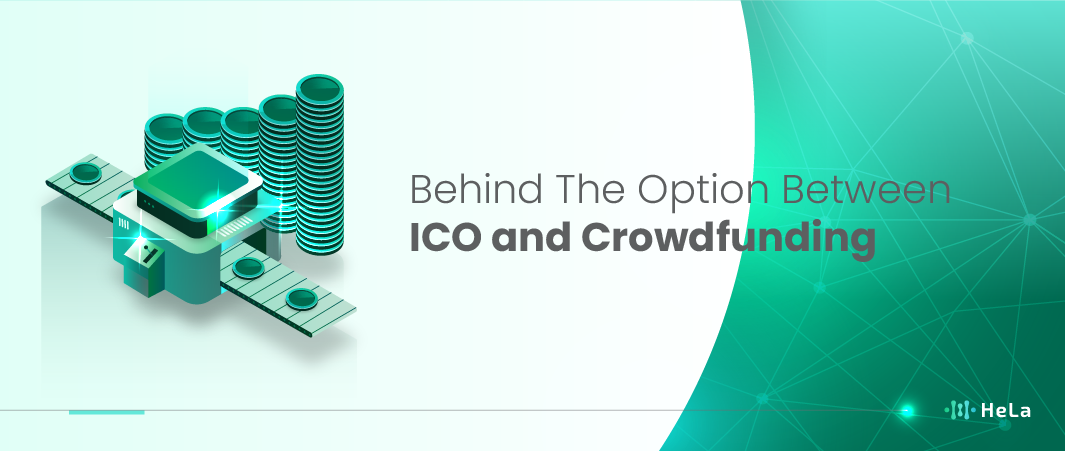In this article, we will explore successful examples of both methods, examine their respective benefits, and how they can open new pathways for financial education and innovation. Read on to understand how ICOs and crowdfunding can be powerful tools for the younger generation looking to make a real impact in this digital age.
Both ICOs (Initial Coin Offerings) and crowdfunding have emerged as appealing alternatives for young people looking to fund projects or ideas without going through traditional routes like banks or major investors. By leveraging blockchain technology, ICOs allow crypto startups to raise funds through the sale of digital tokens, while crowdfunding provides opportunities for anyone to support creative ideas and social projects through direct contributions. This article will delve deeper into the differences and advantages of these two methods and how they can inspire and empower the younger generation to realize their visions.
Young people now have broader access to be part of change through digital fundraising. ICOs offer high-risk investment opportunities with the potential for substantial returns, especially in the ever-evolving crypto world, while crowdfunding provides a more inclusive avenue for creators and innovators to build communities and test their ideas.
What is ICO?

Initial Coin Offering (ICO) is a funding process that allows blockchain-based projects to sell digital tokens to investors. ICO is comparable to IPO in the stock market but instead of stocks, blockchain firms sell tokens. These tokens are often used to engage with the project’s product or service offering, an element that is highly valued. ICOs surged in 2017 when several blockchain projects emerged as a method of financing new companies that are different from venture capital. However, while IPOs are strictly regulated, ICOs are unregulated markets, which makes investments highly risky.
In general, an ICO is very simple to explain: First, it is the creation of a whitepaper by the project team, in which a general idea, concept, technology used, and business model of the blockchain project are described. It also defined a target for the collected funds, and the tokens will be sold at a specific price or through an auction. These tokens are usually bought with other cryptocurrencies such as Bitcoin or Ethereum or in some instances with fiat currencies. After the ICO process is over, they are usually marketed and listed on the various exchanges for cryptocurrencies to be traded. However, it significantly depends on the team, and the implementation of the laid out roadmap that is provided.
Hence, the primary risk associated with ICOs is the poor or lack of regulation or outright scams. As the ICOs are launched by anyone, not all projects are legitimate or have good intention or capacity to deliver the projects. ICOs cases showed many of them were fake, and having collected money, they vanished. Further, it also has a disadvantage of inadequate legal redress for investors in case a venture turns sour or there is fraud. Thus, investors need to research the project and the team (due diligence) before investing in an ICO, focusing on the team, technology, and market opportunities of the project.
However, ICOs also contain large potential. They offer an early opportunity to invest directly in innovative projects and remunerate investors with a high return on their investment if the project pays off. Doping to the traditional source of funding, ICOs have provided opportunities to propel projects that could not have received funds in other ways. Despite the significant reduction ICO activity in 2018, the model is still important for the crypto market and some operational cases are still searched to fund technological projects.
What is Crowdfunding?

Crowdfunding is a fundraising method that involves contributions from many people, usually through online platforms, to support a specific project, product, or venture. Essentially, crowdfunding allows individuals or groups to raise funds from a large number of people by collectively making small contributions. There are various types of crowdfunding, such as donation-based, reward-based, equity-based, and lending-based crowdfunding. Each type has its unique characteristics, but the main goal is to facilitate fundraising for projects that might not be funded through traditional channels like banks or venture capital.
Crowdfunding has gained popularity because of its ability to connect innovators or creators with people who are interested in supporting their ideas. Platforms like Kickstarter and Indiegogo allow creators to present their projects to a global audience and attract funding by offering rewards or products in return. This type of crowdfunding is often used by artists, entrepreneurs, or startups who want to validate their ideas in the market before making further investments. Additionally, crowdfunding provides opportunities for communities to support social initiatives, charities, or political campaigns that they care about.
However, there are risks associated with crowdfunding, especially for backers. Since crowdfunding projects are not always tightly regulated, there is a possibility that the project may fail or be unable to deliver on its promises. Backers typically contribute with the hope that the project will succeed, but there is no guarantee that they will receive the promised rewards. Furthermore, there is also the potential for fraud, where advertised projects turn out to be scams that collect money without any intention of delivering. Therefore, it is important for backers to thoroughly research projects before providing financial support.
Despite the risks, crowdfunding has revolutionized the way fundraising is done, particularly for small projects that might not attract the attention of large investors. Crowdfunding allows innovative ideas to come to life with support from a global community. It also gives creators the chance to build a fan base and test the market before launching their products. Crowdfunding has expanded access to funding, providing opportunities for people from various backgrounds to realize their dream projects without relying on traditional financial institutions.
The Differences Between ICO vs Crowdfunding
ICO (Initial Coin Offering) and crowdfunding are both fundraising methods, but they have fundamental differences in their goals, structure, regulation, and operational mechanisms. Here are the main differences between ICO and crowdfunding:
Goals and Rewards
ICOs are generally used by blockchain or crypto projects to raise funds by selling digital tokens to investors. These tokens typically have a function within the project’s ecosystem, such as access to digital services or products, or they may serve as tradable assets.
In contrast, crowdfunding is broader and used for various types of projects, from physical products and artworks to social initiatives. In crowdfunding, rewards for supporters often include products or gifts, and in some cases, there may be no rewards at all (especially in donation-based crowdfunding).
Regulation and Risks
ICOs often operate in a regulatory gray area, depending on the country and the type of token offered. Many ICOs are not tightly regulated, which increases risks for investors, including the risks of fraud and loss of funds.
On the other hand, crowdfunding, especially equity or lending-based crowdfunding, is generally more regulated, particularly in developed countries. Crowdfunding platforms must comply with certain rules, providing more protection for backers.
Structure and Forms of Rewards
In ICOs, investors purchase tokens that can be traded on crypto exchanges, with their value fluctuating based on the project’s success. These tokens may have utility functions within the project’s platform or act as investment assets.
Also Read: Top 10 ICO Platforms to Consider in 2024 (Update list)
In crowdfunding, backers usually receive products, gifts, or simply satisfaction from supporting a project. Crowdfunding does not offer ownership or tradeable tokens on secondary markets, except in equity-based crowdfunding.
Operation and Reach
ICOs operate within the blockchain environment and typically use cryptocurrencies like Bitcoin or Ethereum as payment methods. ICOs attract interest from the global crypto community and often involve more complex technology.
Crowdfunding, on the other hand, is more accessible to the general public through online platforms, using fiat currencies (such as dollars or rupiah), and covers a wide range of sectors, including art, technology, and charity. Crowdfunding is also more familiar to the general public and does not require knowledge of blockchain technology.
The Advantages of ICO
Initial Coin Offerings (ICOs) have revolutionized the fundraising landscape, offering a decentralized approach to securing capital. Unlike traditional methods, ICOs enable projects to access a global pool of investors, leveraging blockchain technology to break down geographical barriers.
This decentralized model allows for greater liquidity and offers investors the opportunity to participate in the early stages of innovative projects. By eliminating the need for traditional financial intermediaries, ICOs empower project teams to maintain control while fostering a community-driven approach to growth. Here are Some Advantages of ICO:
1. Access to Global Capital
ICOs provide access to a global investor base, allowing projects to raise funds from a broad audience without geographical limits. By using blockchain, anyone with internet access and cryptocurrency can participate, significantly expanding the project’s reach.
This global accessibility is especially valuable for projects that struggle to secure funding through traditional channels like banks or venture capital firms. ICOs offer an alternative path to capital, enabling these projects to bypass conventional financial institutions and connect directly with a wider pool of investors.
2. Token Liquidity
One key benefit of ICOs is the increased liquidity they offer to investors. After tokens are sold during an ICO, they can often be traded on cryptocurrency exchanges, allowing investors to potentially profit if the token’s value rises.
This liquidity also provides an opportunity for investors to mitigate losses by selling tokens if necessary. Compared to traditional investments with longer lock-up periods or restrictions, ICOs offer greater flexibility and quicker access to funds.
3. High Profit Potential
ICOs present a compelling opportunity for investors to gain early entry into innovative projects, potentially reaping substantial returns if the venture succeeds. These high-reward scenarios have drawn significant attention, as seen in successful ICOs like Ethereum, which delivered remarkable profits for its early investors.
The allure of these high returns positions ICOs as an attractive option for those looking to invest in cutting-edge blockchain technology. For investors seeking exposure to new, emerging technologies, ICOs offer a unique chance to capitalize on early-stage growth.
4. Decentralization and Control
A key feature of ICOs is their embodiment of the decentralized ethos inherent in blockchain ecosystems. By participating in an ICO, projects can secure necessary funding without ceding control to large institutional investors or venture capitalists.
This approach allows project teams to retain full control over their vision, governance, and development strategies. The reliance on a global community for support not only democratizes the funding process but also aligns with the core principles of decentralization, empowering projects to flourish without traditional financial gatekeepers.
The Advantages of Crowdfunding
Crowdfunding offers creators a way to validate their ideas and reduce financial risk by testing market interest before investing heavily. It democratizes funding, allowing creators to launch projects without needing significant capital or investor connections.
Crowdfunding also doubles as a marketing tool, providing global visibility and attracting support. Additionally, it empowers communities to back initiatives they care about, driving collective progress and innovation. Here are Some Advantages of ICO:
1. Market Validation
Crowdfunding offers creators a practical way to gauge market interest before making significant investments in their projects. By successfully raising funds through crowdfunding, creators receive a clear indication that there is genuine demand for their product or service.
This early validation reduces the risk of moving forward with an idea that might not perform well in the market. It also provides valuable insights into potential consumer reception, allowing creators to refine and improve their offerings before a full launch.
2. Accessibility for Everyone
Crowdfunding stands out for its accessibility, welcoming participation from both creators and supporters regardless of financial standing. Creators do not need to secure connections with prominent investors or possess significant initial capital to launch their campaigns.
Meanwhile, supporters can contribute even with small amounts, enabling a broader audience to support innovative projects and causes they care about, without the financial barriers typical of traditional investments.
3. Marketing and Promotion
Crowdfunding campaigns inherently serve as powerful marketing tools for creators. By showcasing their projects on crowdfunding platforms, creators can reach a global audience and gain significant visibility.
This exposure often leads to attracting media attention and building a loyal base of supporters who are invested in the project’s success. Even if a campaign doesn’t meet its fundraising target, the increased awareness and interest can open doors for future opportunities and collaborations.
4. Empowering Communities
Crowdfunding has the power to engage and empower communities by enabling them to support ideas and projects they truly believe in. This could range from backing small businesses to contributing to charitable or socially impactful initiatives.
Through crowdfunding, communities can play an active role in driving positive change and supporting innovations that matter to them. This level of participation is often difficult to achieve through traditional investment channels, making crowdfunding a unique and impactful option for fostering community-driven progress.
How to Choose for Our Needs?

Choosing the right crowdfunding platform or ICO depends on your specific needs and goals. Here’s how to navigate these options to best suit your project or investment requirements:
Understand Your Goals
If you’re a creator or entrepreneur, start by clearly defining the purpose of your fundraising. Crowdfunding platforms like Kickstarter and Indiegogo are excellent for creators who want to validate their ideas and engage with their target audience directly. These platforms are typically used by individuals or businesses that seek smaller amounts of funding from a large number of backers, often offering products or rewards in return.
On the other hand, if your project is centered around blockchain technology, and you need to raise significant capital from a global audience, an ICO might be more suitable. ICOs allow startups and tech-driven projects to raise funds by selling digital tokens, which can provide early access to a new product or technology. ICOs are often geared toward investors who are looking for opportunities in emerging tech, with the potential for high returns if the project succeeds.
Evaluate the Platform
Evaluate different crowdfunding platforms based on your project type. Kickstarter is known for creative projects like films, art, and product design, while GoFundMe focuses more on charitable and personal causes. Indiegogo offers more flexibility, allowing creators to keep funds even if they don’t meet their goal, and is ideal for technology and innovative products. Patreon is suited for creators who want to build ongoing relationships with their supporters through subscription-based contributions. Choose a platform that best aligns with your project’s goals and the kind of community you want to engage with.
Research the blockchain platform hosting the ICO, as well as the project itself. Read the whitepaper to understand the technology, the problem it aims to solve, and the tokenomics (how the tokens will be distributed and used). Look into the team behind the project—experienced developers and a strong advisory board can be indicators of credibility. Make sure the project has a clear roadmap, and check whether the tokens will be listed on reputable exchanges for liquidity. Platforms like Ethereum, Binance Smart Chain, and Solana are popular choices for launching ICOs.
Assess Accessibility and Risk
One of the key advantages of crowdfunding is its accessibility. Creators do not need large amounts of initial capital or connections to major investors. The barriers to entry are low, making it an attractive option for new creators and small businesses. However, success on crowdfunding platforms requires effective marketing and the ability to build a supportive community. Crowdfunding also tends to have a lower financial risk compared to ICOs, but it might not raise as much capital.
Also Read: ICO vs STO: What Are The Differences?
ICOs offer the potential for high returns, but they come with significant risk. The cryptocurrency market is highly volatile, and not all projects succeed. ICOs also require investors to be familiar with blockchain technology and digital wallets. If you’re considering an ICO as an investment, make sure you’re comfortable with the risks involved. It’s important to conduct thorough research and only invest what you’re willing to lose. For creators, launching an ICO can attract substantial funds, but it requires careful planning and compliance with legal and regulatory standards.
Conclusion
ICO vs Crowdfunding: The Difference Between An ICO and Crowdfunding has provided deep insights into how these two different fundraising methods can open new opportunities for the younger generation. ICOs offer high potential returns by selling digital tokens within the blockchain ecosystem, giving early access to investors for innovative projects. On the other hand, crowdfunding allows creators to gain support from the community through small contributions, expanding their reach and obtaining market validation without relying on major investors. Both methods, with their unique characteristics and advantages, demonstrate how technology and creativity can merge to create new opportunities.
Understanding the differences and benefits of ICOs and crowdfunding can help the younger generation make more informed and strategic decisions in the world of investment and project funding. By leveraging these methods, individuals and startups can access capital, gain support, and realize their ideas in a more affordable and inclusive way. Thus, both ICOs and crowdfunding not only offer financial solutions but also empower the younger generation to become pioneers in innovation and change in the digital age.
Disclaimer: The information provided by HeLa Labs in this article is intended for general informational purposes and does not reflect the company’s opinion. It is not intended as investment advice or a recommendation. Readers are strongly advised to conduct their own thorough research and consult with a qualified financial advisor before making any financial decisions.

